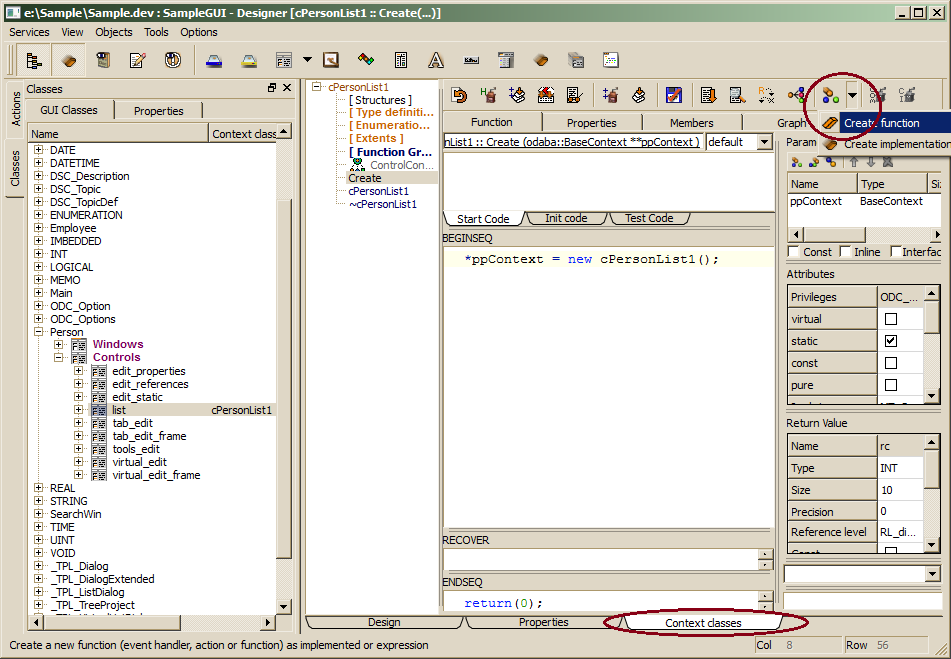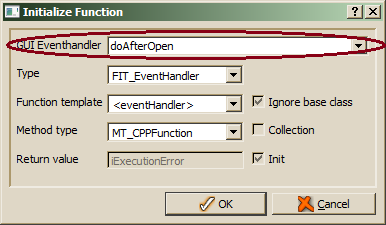Edit context class
In order to implement a GUI context class, one may change to the Context class tab in the Designer or edit the class in the ClassEditor.

The function list displays the functions already implemented or generated. In order to create new functions, one may use the context menu on the function list or the create button in the class toolbar. When selecting the Create function menu item from the toolbar menu (as shown in the picture above), a function initialization dialog pops up:

By default, event handler function type (FIT_EventHandler) is selected fot the context function to be created. In this case, one may select one of the event handler names defined in the drop list above. When changing the function implementation type, the drop list disappears and an input field allows you entering your function name. The Method type is selected according to the settings in the project. In order to test new functionality, one may select OSI (MTT_OSIFunction) rather than C++ or C#. When compiling the class, OSI functions are not be generated into the class source file. Thus, one may test the new function immediately without compiling the class and creating a new context library version. Later, you might change the implementation type and create a C++ or C# function from the OSI function.
While creating the function it will be initialized according to the handler function declaration or the function template selected from the Function template list. When the same function has been implemented in a base class, the function will be initialized according to the function definition in the base class. In order to avoid initializing from base class functions, the Ignore base class option should be switched on.
One might mix OSI with other programming languages as long as both are strictly separated, i.e.as long as OSI functions do not call C++ or C# functions and reverse. The only exceptions are actions called via executeFunction(), which supports mixed processing.

